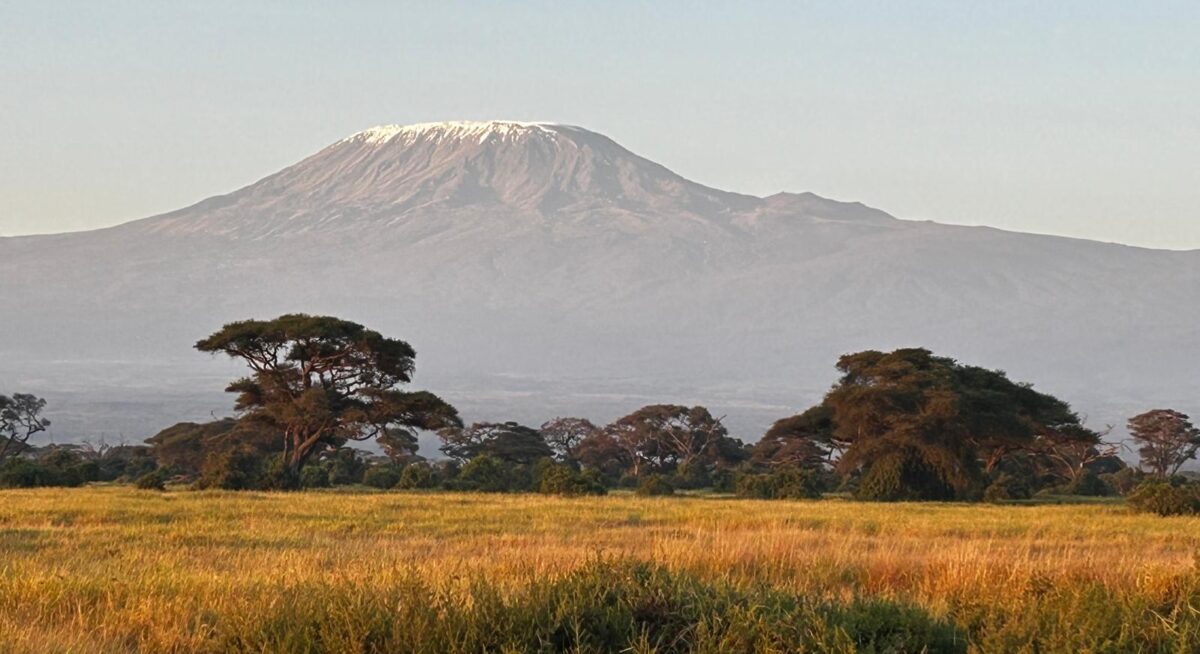My 5th country on this overland trip is Tanzania, and once again, it is worth sharing a few factoids about this country to put things in better context and to educate myself (and you, if needed) a little about this corner of the world.

- As you can see in the map above, Tanzania is on the east coast of Africa bordering the Indian Ocean and abutting 8 countries, including Mozambique, Malawi, Zambia, Democratic Republic of the Congo, Burundi, Rwanda, Uganda, and Kenya, and it is located just south of the equator between the latitudes 2-6 degrees south.
- It is part of what is commonly referred to as “East Africa”, along with Kenya and Uganda (although there are many other recognized delineations).
- The official name of Tanzania is the United Republic of Tanzania.
- Roughly 1.4 times the size as Texas or twice the size of California.
- Roughly 64 million people, compared to ~332 million in the U.S..
- 3 official languages: Swahili and English everywhere and Arabic only in Zanzibar. However, over 100 different languages are spoken in Tanzania, making it the most linguistically diverse country in East Africa. Swahili is used in parliamentary debate, in the lower courts, and as a medium of instruction in primary school. English is used in foreign trade, in diplomacy, in higher courts, and as a medium of instruction in secondary and higher education.
- Government is a democratic republic, which includes independent executive, legislative and judicial branches with a structure similar to the US, except that the legislature is unicameral and thus contains only a single national assembly.
- Official currency is the Tanzanian Shilling, but many tourist places (e.g., hotels, lodges, etc.) accept US Dollars.
- Major exports include Gold, copper, diamonds, and other minerals, in addition to coffee, tobacco, cotton, coconuts, Brazil nuts and cashews.
- Although the government does not recognize indigenous peoples, roughly 1% self-identify as indigenous, including the Hadzabe, Akie and Maasai peoples. However, there are some 120 self-recognized tribes.
- Maasai are the most recognizeable tribe due to their distinctive bright red-patterned robe, or “Shuka”, wrapped around their bodies.
- Often referred to as the “Cradle of Humanity” because the earliest known hominids and the oldest remains of genus Homo are found here and elsewhere in East Africa.
- Tanzania’s colonization history is very similar to much of eastern Africa, with a few twists. The indigenous hunter-gatherers began to be displaced by Bantu peoples some two thousand years ago, and the influx of various Bantu peoples continued through the 19th century. The Portuguese were the first Europeans to sway influence over the region during the 16th and 17th centuries but never assumed any real colonial control over the native peoples and never reached too far from the coast. During the second half of the 17th century the Portuguese were slowly driven from the coast by Arabs from Oman, and from the end of the 17th century the Arabs were the dominant power in the region. The Arabs became slave traders and took huge numbers of slaves from the region during the 18th and 19th centuries, exporting slaves mostly to Arab or European colonies in the Indian Ocean. Eventually, the Germans arrived in the mid 1800’s and by 1885 had started ruthlessly taking over the region under the banners of the German East Africa Company. Meanwhile, the British invaded from the North in modern-day Kenya and from the coast during the first world war and fought the Germans for control of the region. After the war the Germans surrendered to the British and in 1918 the mainland area was named “Tanganyika” and fell under British territorial control. British colonial rule of Tanganyika ended in 1961. After the Zanzibar Revolution overthrew the Arab dynasty in Zanzibar, it too became independent in 1963, and then in 1964 merged with mainland Tanganyika in 1964 to become the United Republic of Tanzania.
- Has the tallest mountain in Africa, Mount Kilimanjaro, at 19,340 feet!
- Has the world’s largest intact caldera (collapsed volcano), Ngorongoro Crater.
- Has the world’s second largest lake, Lake Tanganyika, although the Lake falls on the international border and thus is shares this distinction with the Democratic Republic of the Congo and Burundi.
- Has ~38% of its total land area devoted to national parks, reserves and wildlife management areas – impressive accomplishment and second only to Zambia in all of Africa!

Welcome to Tanganyika or Tanzania! The migration in the Masai Mara is in full swing and should still be pretty good when we meet up in there in a few weeks. Safe travels and Safari Njema!
Awesome, can’t wait!
Have fun.